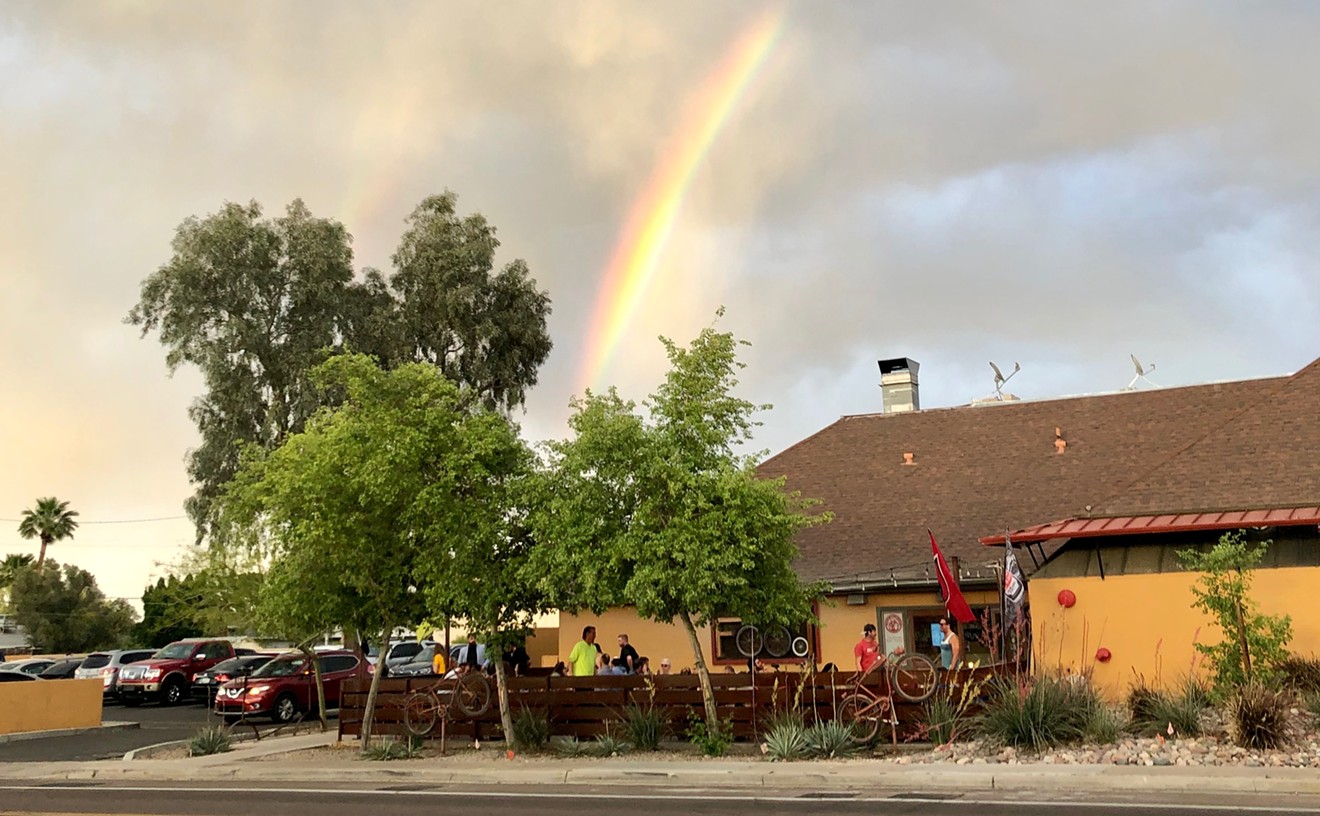Sure, the Arizona State Fair is full of fun rides, greasy food and some of the best people watching around. But, for a moment let's return to a "Charlotte's Web" sort of agricultural era, where the State Fair was about judging animals, food, and animals that make or become food. We spoke with certified USBGA Boer goat judge and Indiana resident Blakely Clements to find out more about what it takes to be in the ring at the fair.
See also: Rabbit: It's What's for Dinner in Phoenix, Thanks to Entrepreneur Nick Klein
Blakely Clements, 31, is a former 4H-er and first time Arizona State Fair judge for the open class of boer goats. Clements has been judging since 2001 and earned his license in 2010 He and his business partner also run B & B Show Stock in Bedford Indiana. There are essentially four divisions of goats and they are separated by purebred does, purebred bucks, meat goats and mixed goats, or goats that have mixed blood and are not full blooded descendants of the breed as it originated in South Africa.
The open category at our fair allows nearly anyone with a registered animal. This includes individuals, farmers and 4H participants. Unlike 4H, the open boer goat category only judges the animal, not the showman ship of the exhibitor. Although, often the judge will ask the exhibitor questions about weight and how the animal was bred and its lineage. There is typically a necessary amount of entries (10) in each category to make it sanctioned show.
There's a score card and general appearance account for up to 60 points. This is "somewhat of a preference," says Clements. In the purebred categories especially, he's looking at face and body shape and how it relates to the first boer goats from South Africa. Boer goats were first introduced to the US in the mid 1990s and were very expensive at that time.
Now, Clements says, there's a more diverse offering of animals for purchase. And prices vary by what the animal will be used for (meat, breeding or show) and its lineage. A market animal for consumption might run between $85 and $200. While animals for 4H kids might run $200 to $400 and high end breeding or show goats and sell from $500 to several thousand dollars. Recently, he says, a doe sold for $32,000, and of course around specific holidays, like Easter, meat goats are more in demand. "The product is what we're judging, the majority are show animals and are used for breeding stock purposes." Boer goats do okay here in Arizona, because they do well in the heat. But you do need a bit of space if you're considering raising this breed. A male who you're feeding grain and hay to can do well in a 10' x 25' pen, while every six does will require an acre of grass and might still need supplemental food. This breed also gets pretty large. Does can weigh between 190lbs and 230lbs while bucks are 200lbs to 350lbs. In other words, this is not a miniature breed.
Clements says that the type of judging he prefers is 4H and county fairs, "because you get to work with the youth." Not a surprise since Clements is also a director with his local Head Start non profit program. "I remember being there and being excited and the work it it took to do it. It's nice to watch the kids mature over time." He often asks questions to judge 4H showmanship to ensure everyone knows how to take care of their animal and has a working knowledge of the industry. "One of the biggest issues we have in the industry is the lack of communication about what goat tastes like."
Now that he travels a bit as a judge, Clements looks forward to seeing the variations from state to state. He was busy during his few days here in Arizona, although said he had a bit of a chance to walk around and see the fair rides on Saturday before he flew back to Indiana.
Enjoy open and youth classes of competition at the Arizona State Fair: October 16 - 20 - Llamas, Sheep, Angora Goats, Poultry October 23 - 27 - Youth Week: Beef Cattle, Swine, Sheep, Goats, Dairy Cattle and Pigeons October 30 - November 3 - Dairy Cattle, Dairy Goats and Small Stock Educational Display










